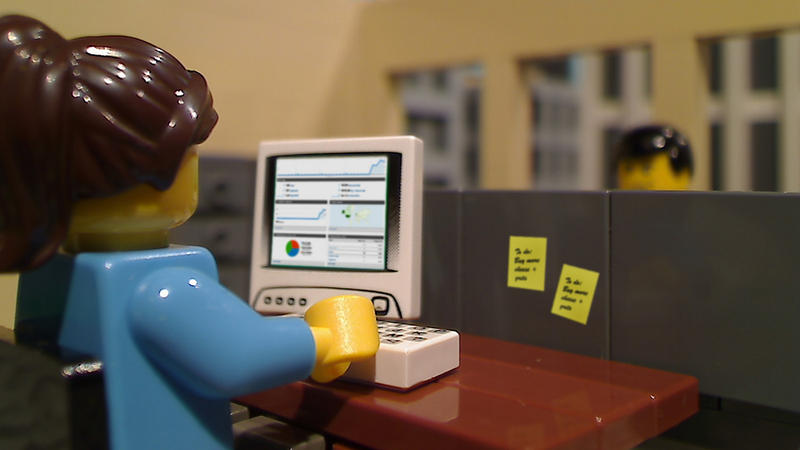What’s the secret to happy employees? Having no secrets. When it comes to your team’s happiness at the workplace, sharing really is caring. Sharing is one of the most effective ways to make your employees feel valued, motivated and fulfilled. It’s a simple way to turn an office into a vibrant community. What’s more, today’s tech tools make it easier than ever to share without taking up time and energy.
Here are 4 ways to share business intelligence to make your team happy, engaged and productive:
#1 Share Accomplishments
Sharing what everyone’s gotten done every day is the foundation of employee engagement. You can’t build a happy, engaged work community if nobody knows what anybody else does.
By sharing accomplishments, you build team cohesion around a daily rhythm of getting stuff done and making progress toward an ultimate goal. It shows how valuable each person’s contribution to the team is, day in and day out. For the individual employee, it’s incredibly motivating and gratifying to build a public record of their individual achievements.
Tools like iDoneThis make it simple to share progress and accomplishments regularly. iDoneThis is a dead-simple, email-based status report tool. Every evening, iDoneThis sends each person on the team an email asking, “What’d you get done today?” All they have to do it reply. The next morning, the team gets another email reporting everyone’s accomplishments from the previous day. It boosts team morale first thing in the morning because it shows everyone’s awesome progress toward a goal and kickstarts another productive day.
#2 Share Task Assignments and Objectives
Sharing task assignments keeps everyone posted on what everyone else is working on, from the CEO down through the whole organization. By making tasks and objectives public and social, rather than private and individual, sharing assignments creates a sense of communal purpose. It gives individual team members a clear understanding of how they will be contributing to the big picture and fires up their motivation.
Tools like Asana make it easy to share task assignments and objectives. Developed by Facebook’s Dustin Moskovitz, Asana helps employees break down business objectives into tasks and assign those tasks to themselves or others. By allowing everyone to see and add to each other’s workload, Asana creates a team that’s more of a nonhierarchical work-sharing community than a traditional hierarchical company.
[image_1_big]
#3 Share Appreciation
Sharing appreciation for an employee’s hard work increases their job satisfaction, motivates them to continue to perform at a high level and inspires other employees. In fact, a recent study by Towers Watson concluded that whether employees feel their efforts are appreciated is the number one determining factor of engagement at work.
Sharing appreciation should go hand in hand with getting stuff done and reporting on it. Recognition and thanks need not be formal, but can be done in a fun, casual way. At Shopify, an ecommerce startup that creates online stores, employees receive thanks via an internal online system called Unicorn. Employees thank each other by awarding unicorns. At the end of each month, employees are awarded bonuses depending on the number of unicorns they received. Shopify’s innovative system kills two birds with one stone – it creates a strong culture of thanks while crowdsourcing the distribution of performance-based bonuses.
#4 Share Ideas
In addition to sharing specific task-oriented information, it’s also important to share news and information that allows for creativity, collaboration and discussion. Sharing ideas, questions, articles and other information keeps your team intellectually engaged and connected with each other. Establish a forum where employees can get bounce ideas off of each other and pose questions to their peers.
Internal social network tools like Yammer enable employees to post statuses, share news and chat. It can connect members of your team who may otherwise feel isolated in their department, geographic location or time zone. It’s a great way to build a catch-all social network to supplement the information flow created by more specialized tools like Asana and iDoneThis.
Conclusion
Happy employees boost the bottom line of companies by 240% according to a 2009 Gallup report. This is because happy employees make happy customers. Sharing assignments, accomplishments, appreciation and ideas is critical for building the happy team that’s going to propel your organization’s success.









